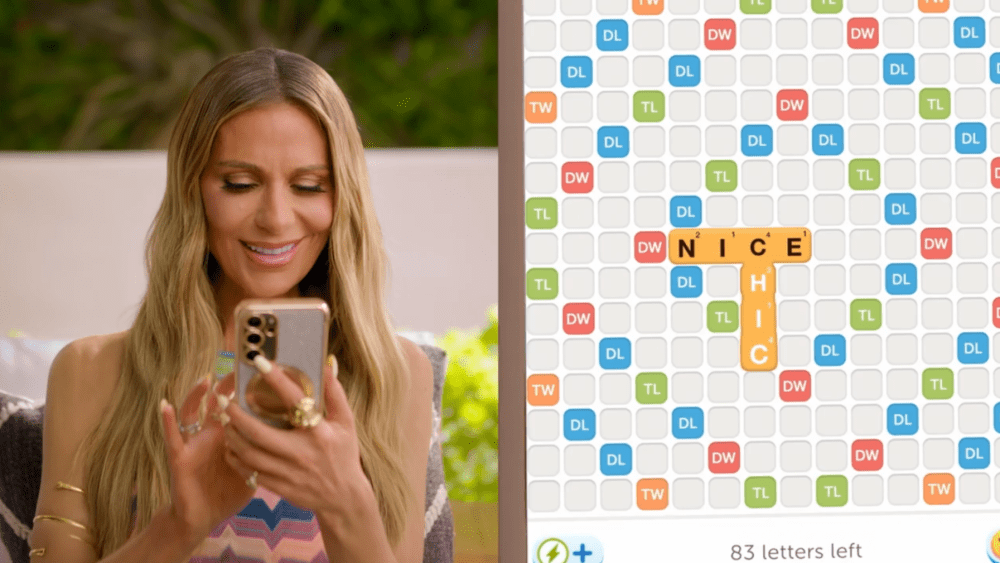With the rise of “cozy gaming” culture, more game companies than ever are developing titles and products specifically targeted at women. But while the gaming industry itself has become more aware of the segment of its consumer community made up of female gamers (whose interests range from “Call of Duty” to “Hello Kitty Island Adventures”), it’s the advertisers and media buyers interested in gaming that aren’t fully aware of the market.
“Women are generally underserved in terms of being targeted as gamers through an advertising lens,” Gabriel Heyman, vice president of global brand sales and partnerships at mobile gaming giant Zynga, told Variety. “I think there’s still a lot of bias when brands get into the game, even though we’re trying to reach this category of Gen Alpha and Gen Z men.”
Heyman added, “But because there are so many large casual gaming companies that are interacting with brands like Zynga and King, the people who are buying and planning media in that category are actually probably understanding that their audience is playing games more than in other categories.”
Zynga’s “Words With Friends” launched an ad campaign starring “The Real Housewives” alums Dorinda Medley and Dorit Kemsley that aired on Bravo last fall. This team-up remains relevant, according to Zynga’s Comscore report for June 2025, which says that for female gamers, 59% have watched cable channels like Hallmark, Bravo, and Lifetime in the past week, and 61% are likely to say Bravo is their favorite channel.

Gabriel Heyman of Zynga
Silas Fallstitch
“Generally speaking, there’s a really interesting trend of celebrities advertising mobile games,” Heyman said. “Courteney Cox and Lisa Kudrow are starring in a really cute and funny ‘Royal Kingdom’ ad. There’s definitely an increase in celebrities getting into these games, and the celebrities they choose to be in the game are definitely the ones that resonate with Millennial and Gen X women.”
That’s because “the sweet spot for casual gamers is definitely millennial/Gen X women,” Heyman said, adding that boomers are now “one of the fastest growing segments of gamers.”
Additionally, Zynga research found that female gamers are more likely to be the head of household (75%), mother (65%), and primary grocery shopper in the household (72%). According to the mobile gaming company, these gamers have spent between $5,000 and $10,000 on online shopping in the past six months, with 62% of that being on mobile in-app purchases with retailers (43% more than average).
“Female gamers truly push back against outdated stereotypes because they see themselves as ambitious, career-focused and style-conscious,” says Heyman. “So advertisers looking to reach those types of women on these channels may be missing out by not also looking at casual gaming.”
This goes both ways. Heyman said gaming companies should promote their games on women’s channels like Bravo, Lifetime and Hallmark, as well as within other games. It also says that brands promoting products and services to female consumers should buy up in-game advertising to reach female gamers, rather than focusing the majority of their resources on connected TV ad buys.
“I think game companies have finally realized that they don’t need to buy ads for other games to drive players with their user acquisition strategy,” Heyman said. “I often say that the elephant in the room, especially for CTV buyers — and they don’t like to admit it, but it’s not the streamers — is, what are you doing when you’re sitting on the couch? You’ve got your phone next to you. So I think ultimately mobile game companies are going to say, oh, obviously this is a really great time to advertise. The prime time for gaming is the prime time for TV, the evening hours.”
Ultimately, Heyman says, “One of the great things about gaming companies, especially mobile gaming companies, is that they don’t put people into buckets like female/male or female/male.”
She continues: “The only psychology that really matters to gaming companies is that you’re a gamer and you want to play games.”

